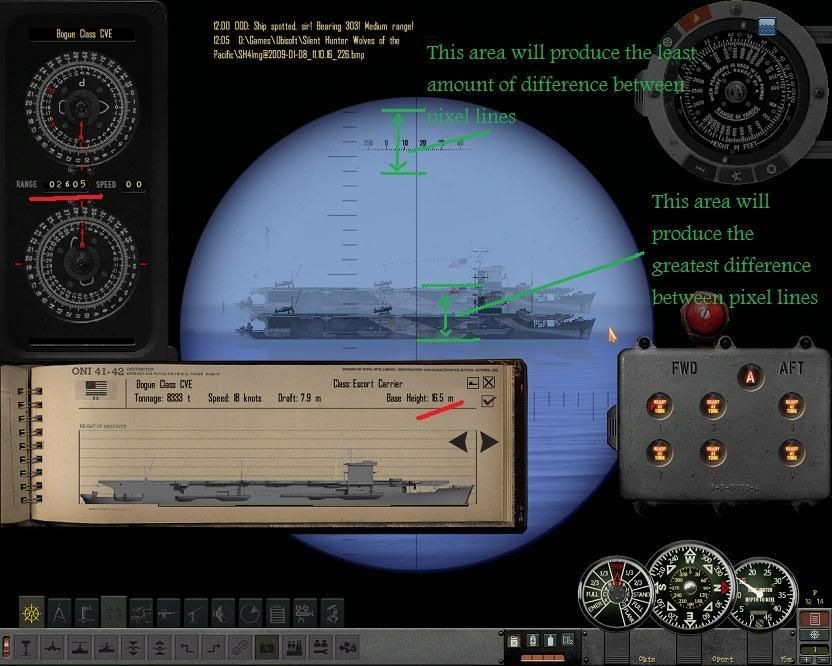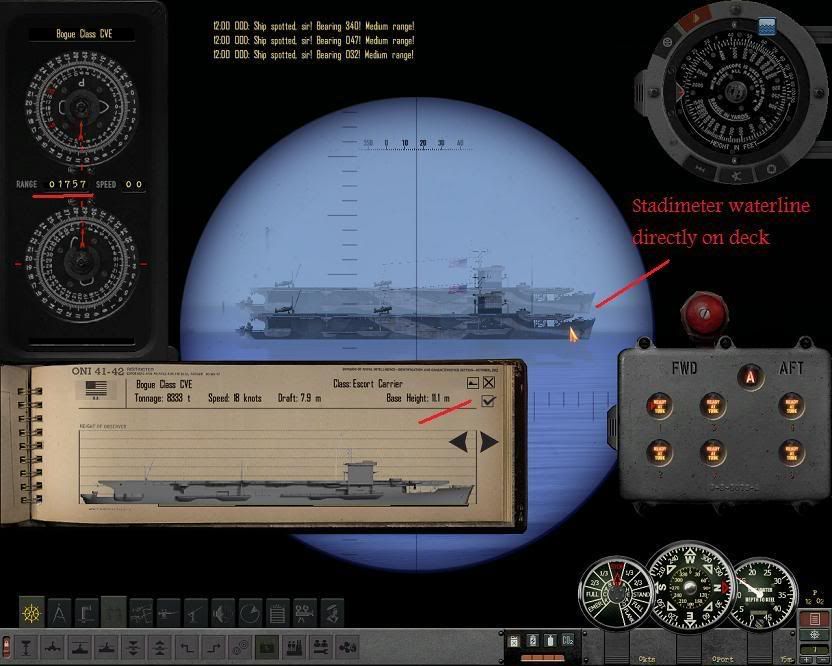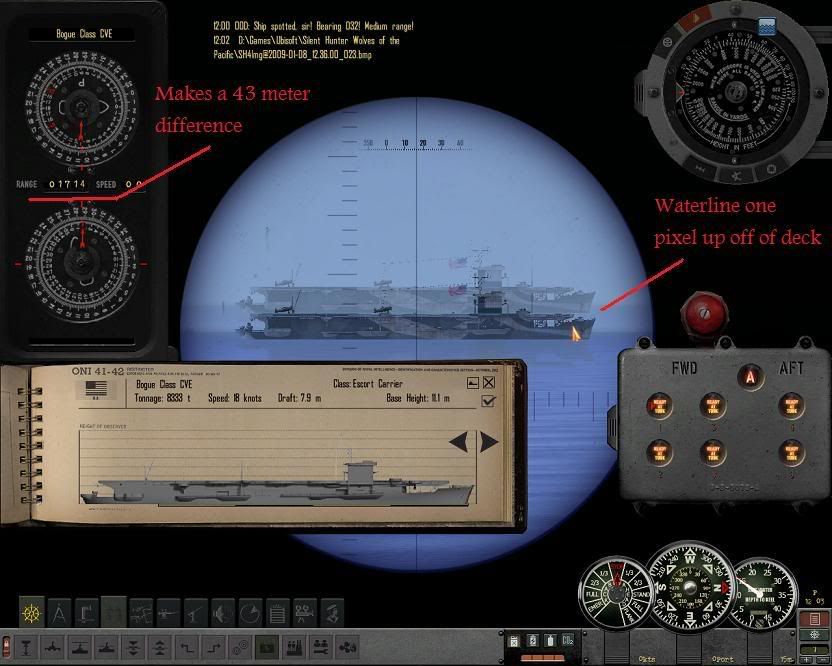Quote:
|
Originally Posted by Rockin Robbins
Here's the question for you. If the top of the tallest stack is half the height of the tallest mast (probably it is more like 2/3), doesn't that have implications for the range accuracy? For instance, if at 1000 yards a one pixel error made a 50 yard error in range at the masthead, wouldn't that be proportionally greater for the lower elevation of the tallest stack, yielding a range error of 75 to 100 yards with the same one pixel measurement error? There doesn't seem to be a free lunch anywhere around here.
|
Boy-O-boy Rockin R, I had to read this question a time or two to understand what your asking. For a minute I was picturing a similar question "If Tom leaves his house and heads west for 22 minutes at a speed of 15 mph, and Fred leaves his house and heads east....................." then I snapped out of it!!
Yes, there are implications for range accuracy. There are a couple of factors that make the difference. One is the
height in the periscope image when the Stadimeter is being used. The higher up from the water line the stadimeter second image is placed, the less difference in range there will be. The game was developed with this in mind to simulate a target farther away will appear smaller in the scope image. This is to make it more difficult to get a correct range when the target is farther away. When the target is nearer, it fills up more of the screen, and the difference in one pixel line to another is less when making a stadimeter reading.
The second factor is the actual
Mast Height figure (from this point on I'm going to just call it height, it really doesn't need to be the mast at all). I found that differences in adjacent pixel lines were made do to the size of the height measurement. The larger height measurement created
less range difference between adjacent pixel lines. The smaller the measurement the
greater the difference. I believe the devs did this to balance out the playing field, to make each ship as equal in range finding, even though on ship is small the other is large.
So the truth is there is almost a wash between the two factors, one balances out the other. Here's an image of what I'm talking about, just read the green highlights for now.

This image displays the first factor I mentioned, the stadimeter placement within the scope image. The differences are gradual from the waterline to the top. So don't misunderstand my poor drawings, thinking the pixel line differences only occur within the green marks.
An example for the second factor, the height measurement. A figure of 10 meters could produce a difference of 6 meters to 1 meter difference between adjacent pixel lines. The 6 was toward the waterline, the 1 towards the top of the above image. For a height measurement of 25 meters, the differences were doubled. The lower towards the waterline you would get 12 meters range differences between pixel lines, the higher you would get 2 meters difference.
You may wonder where these points were taken. Although RFB did away with the horizontal center line, there are three larger hash marks above the center of the scope. I used those three hash marks to check the differences within the scope image. Believe me, the closer to the water line you get the much larger the difference becomes. The differences of 6 meters or 12 jump real quick as you lower the stadimeter mark point.
I'm going to kill two birds with one stone so I have a reason to point out the red marks on the first image. You'll notice the Base Height is set to the RFB figure of 16.5 meters. I had just completed a range check and the PK shows the found manual range as 2605 meters. That's all fine and good except the actual range to target was 1748 meters!! That's an 857 meter difference off target. Did I say you couldn't hit a bull in the as.................... Yep, I did. And no you couldn't!! Oh yea, if you would shoot at point blank range, but I don't want to kiss 'em.
The following image shows the corrected height as 11.1 meters. The PK now shows a found range to target of 1757 meters, just 9 meters off. Anything under 15+/- meters off, is right on target, the game really won't calculate it any closer.

I thought I'd show you what one adjacent pixel line will do when using the same corrected height.

Can you see the difference in the position of the stadimeter waterline mark? That's one pixel line. I mentioned the horiziontal hash marks on the scope, there are 3 pixel lines to the thickness of one hash mark line.
A 43 meter difference with a height measurement of 11 meters over a distance of a little over 1700 meters. I know you guys think that height measurements shouldn't be dead on, because this gives us too much accuracy, but for a long time I've known there isn't any way fool proof range finding will occur. Can you see what a difference would be if the seas were rough, it's dark, you have an escort breathing down your neck, you miss the speed by a knot, or the AoB is off a bit. Good height measurements do not guarantee a thing.
And one last thing, if RFB uses official documents like the OMI to input base height measurements in game, why is the Bogue American Carrier not correct? We don't know what our own ships heights are? And don't feed me some line of bull about real life would have given false information to the enemy as standard practice!!
A couple of other range inaccuracies in an approximate distance of 1700 meters.
Victory Freighter was off 95 meters too long
Fletcher DD 138 meters off target too short
Somers DD off 91 meters too long
Wasp CV off 152 meters too long
River Class off 281 meters too short
Hogs Island Freighter off 213 meters too long
OK, long enough for now.
VANJEST, YOUR TIMES COMING. I GOT A RESPONCE FOR YOU 'OL BUDDY. :rotfl: